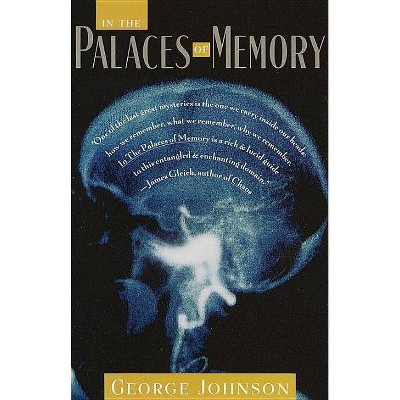In the Palaces of Memory - by George Johnson (Paperback)

Similar Products
Products of same category from the store
AllProduct info
<p/><br></br><p><b> Book Synopsis </b></p></br></br>Even as you read these words, a tiny portion of your brain is physically changing. New connections are being sprouted--a circuit that will create a stab of recognition if you encounter the words again. That is one of the theories of memory presented in this intriguing and splendidly readable book, which distills three researchers' inquiries into the processes that enable us to recognize a face that has aged ten years or remember a melody for decades. Ranging from experiments performed on the wetware of the brain to attempts to re-create human cognition in computers, <i>In the Palaces of Memory</i> is science writing at its most exciting.<p/><br></br><p><b> From the Back Cover </b></p></br></br>Even as you read these words, a tiny portion of your brain is physically changing. New connections are being sprouted--a circuit that will create a jab of recognition if you encounter the words again. That is one of the theories of memory presented in this intriguing and splendidly readable book, which distills three researchers' inquiries into the processes that enable us to recognize a face that has aged ten years or remember a melody for decades.<p/><br></br><p><b> About the Author </b></p></br></br><b>George Johnson </b>writes regularly about science for the<i> New York Times</i>. He has also written for <i>National Geographic</i>, <i>Slate</i>, <i>Discover</i>, <i>Scientific American</i>, <i>Wired</i>, and the<i> Atlantic</i>, and his work has been included in <i>The Best American Science Writing</i>. A former Alicia Patterson fellow, he has received awards from PEN and the American Association for the Advancement of Science, and his books were twice finalists for the Royal Society's book prize. He lives in Santa Fe, New Mexico.
Price History
Price Archive shows prices from various stores, lets you see history and find the cheapest. There is no actual sale on the website. For all support, inquiry and suggestion messages communication@pricearchive.us




















